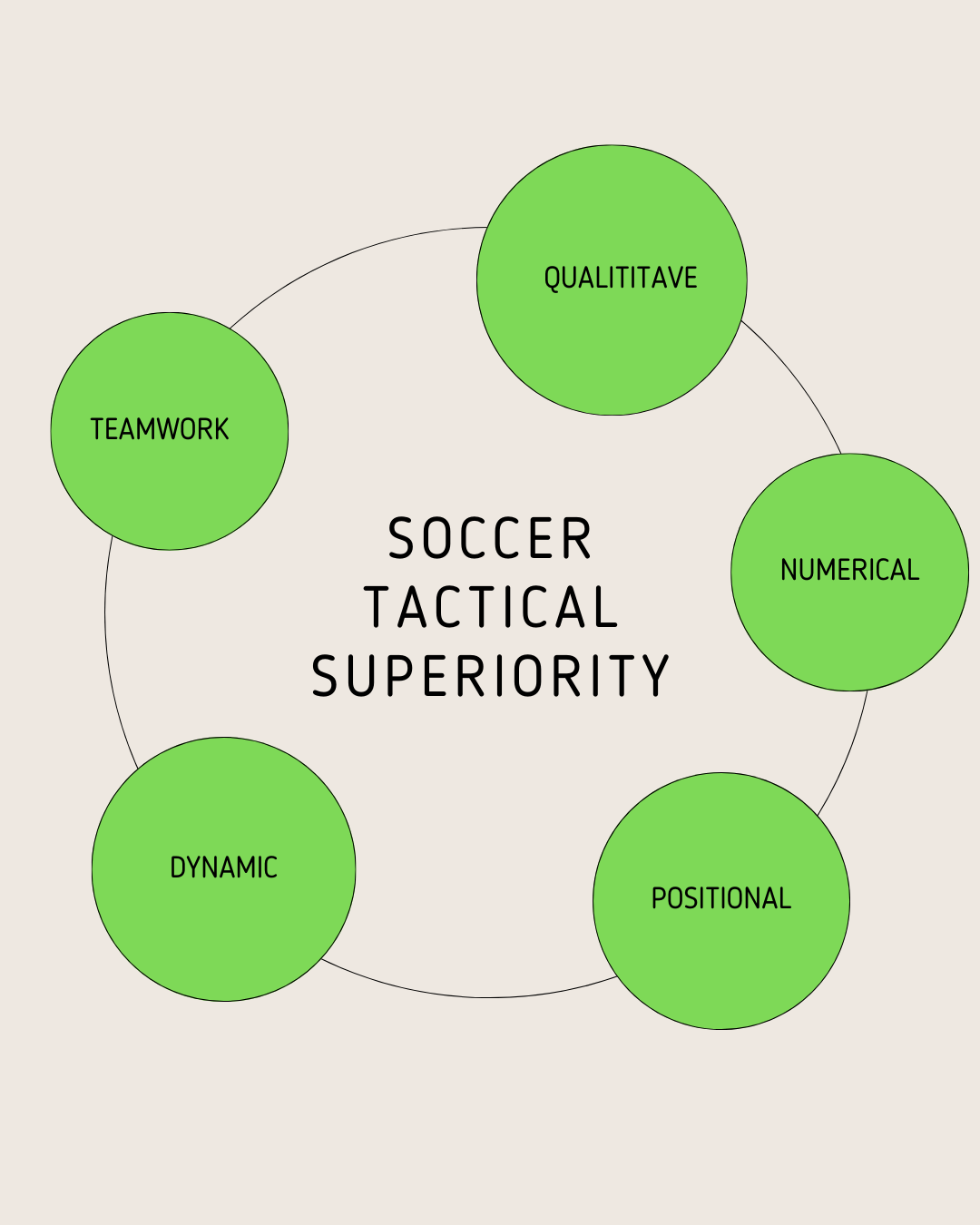Soccer Tactics Principles – Superiority Analysis for Coaches [2025]
“Soccer is no longer beautiful” – we would hear this so often. Soccer fans criticize that the systems that the coaches use today are so rigid. Most creative players have very little to give in a place where everything is pre-calculated. We also see teams that have no business doing well, beating teams that have spent eye-watering amounts of money on world-class soccer players. Now, how is that possible? Is it that they have mastered all soccer tactics principles or simply the game played in favor of their advantages? Finally, we see that in some clubs the highest-paid person is the coach and not the players. Is that fair?
“My soccer tactics will get you in the final third of the pitch, then it’s up to you to score” – honest soccer coach
A soccer coach can devise the perfect soccer strategy for getting the team to win, but it’s up to the players to execute. Having said that, the coach can’t just throw their hands in the air and give up. Maybe they were coached with a great soccer methodology, but didn’t develop the way they wanted. They have to analyze each aspect of the game and find opportunities to take any advantage of. Very often people think that winning is about being better at the game that is played. In fact, it’s about redefining the game to use the superior qualities that your team has. Soccer tactics principles are essentially bucketing these superiorities so that we can systematically analyze our team and opponents. If we set the game so that the competition is about our advantages instead of our disadvantages, then we can win the game without being the better team in the other aspects of the game.
There are 5 principles of soccer superiorities. Numerical is about having more players than the opponents in the area of play. Positional defines which areas of the pitch are occupied by your players. Qualitative superiority is to have a player with an advantage over the opponent in a direct duel able to take advantage of the mismatch. Team cohesion helps us balance the qualities of players playing on the pitch. Dynamic superiority is all about how to synchronize the movement and the timing of our players so that we create chaos in the opponent’s offense and defense.
Numerical
This is probably the easiest superiority to explain and understand. All things being equal, you don’t need to be a soccer statistician to want to have more players than the opposition. That’s why it’s so hard to win when your team has a red card. In a smaller setting, a team in possession and a 3v2 or a 4v3 overload virtually always keep the ball. They might not score, but they will at least retain the ball. If we can position our players to have the numerical advantage, then we have achieved much. Well, if you play 11v11, how can you do that? If you have numerical superiority in one area, then you will have inferiority in another. It’s up to you to then find where the superiority is and move the ball quickly there. If the advantage reverses, then move the ball to the other area. So, what we are coaching is for our players to identify this situation and act accordingly.
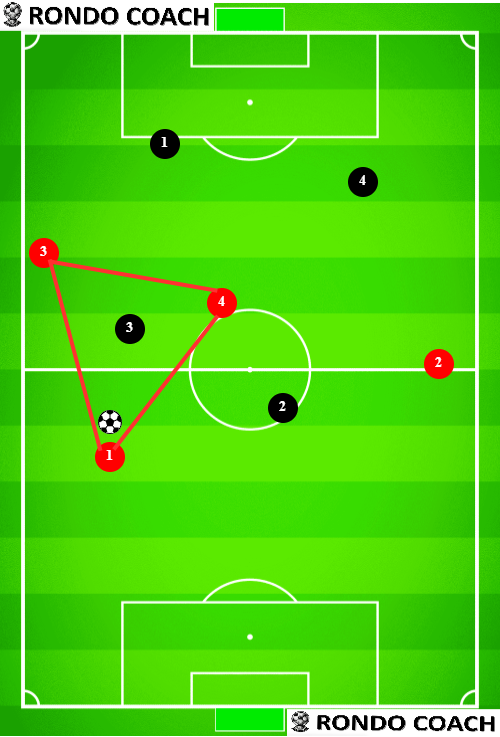
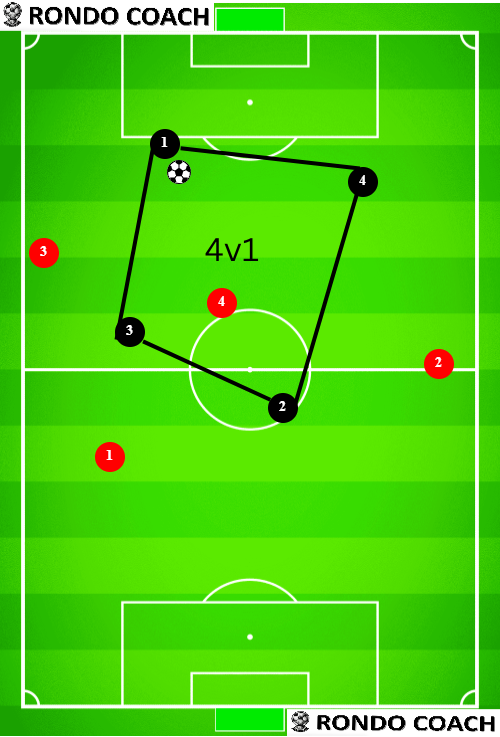
Let’s look at the two situations above. We didn’t move the players at all, but instead just changed possession of the ball. Depending on that, either the red team has 3v1 situation or the black team has 4v1. It’s important to understand that the entire field is still 4v4. However, the location of the ball redefines the playing area to a smaller area. If you have numerical advantage in that area, you will likely win. If you have disadvantage, find a way to move the ball into an area where you will have advantage.
Positional
Do you remember how kids who have never been coached play? They chase the ball all around the pitch. Technically that gives them numerical superiority as long as they can run. However, they get tired so much faster and they are often late to cover gaps on the pitch because the ball moves faster than them. To be honest, you already know that chasing the ball is not the way to play as a team. What we need to also acknowledge is that soccer is all about time and space. You don’t want to be caught in offside or be in the part of the field where nothing is happening. That means that players need to be in the right place at the right time. Positional superiority is all about the right place.
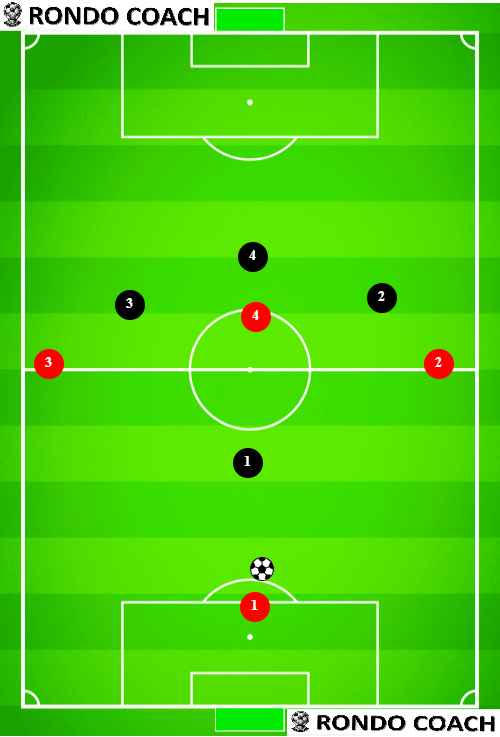
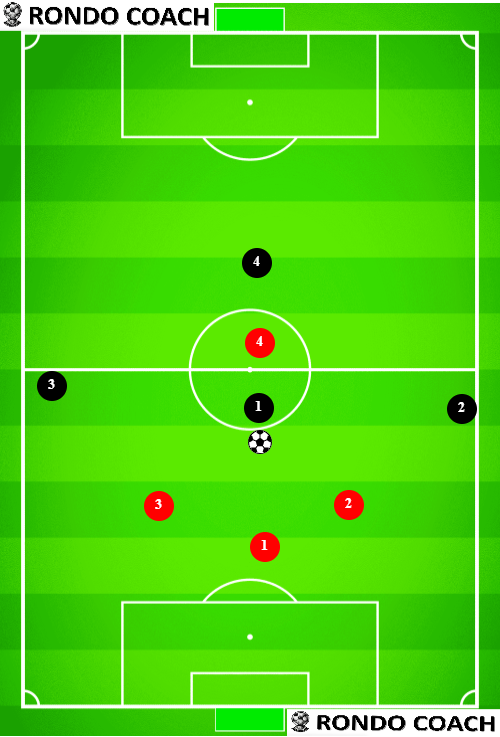
Let’s look at the same situation, with the only difference that in one case the red team has the ball, and in the other case the black team has the ball. It’s blatantly obvious that the team in possession wants to make the pitch bigger and the defenders want the opposite. This is the first lesson that is taught in soccer tactics at U6, even by beginner soccer coaches. Of course, there is much more complexity when it comes to zones of plays, areas of passing, half-spaces, and so on. But in a nutshell, positional awareness is the main reason why a team with inferior players can hold a team with soccer superstars to a draw and sometimes win.
Qualitative
Probably the most obvious one is the qualitative. If a player is faster, stronger, tactical, and technically dominant over another player, then it’s going to win 1v1. However, most of the time that’s not the case. A player can be faster, but not stronger. In that case, the real duel is about what the test is going to be. The faster striker with the ball will want to have a spring chase against the slower defender. The stronger poacher will want to hold up the ball against the weaker center back. Very similar to a boxer trying to define the type of fight based on their characteristics, or a basketball player doing pick-and-roll to make taller vs. shorter player mismatch, we try to create a blatant mismatch in qualities when we create tactics. The attackers are the ones who have more freedom, while the defenders stick in positions. So, we want to create this in possession and nullify it when defending.
Teamwork and team balance
You often hear “On paper, they should have won”. You look at a team that has great individuals but are not winning games. If you wonder what is happening, look at the balance of the team. It is rare that they don’t like each other or anything like that. It’s just that simply their individual deficiencies combine to a point that can be devastating. A good example of a team that worked well together is AC Milan with Gattuso and Pirlo. Both of them were really good in what they did but had massive gaps in their game. Gattuso was a great defensive midfielder, relentless and aggressive. Pirlo was one of the best deep-lying playmakers but was physically inferior to the average central midfielder at the highest level. However, they balanced each other. If the team had two Gattusos or two Pirlos, then it would have been really bad.
In contrast, England had two of the best central midfielders ever – Lampard and Gerrard. Both of them were winners and natural leaders. Also, both of them were so respected and quality players, as well as tactically savvy that they were coaches in the Premier League less than a decade after retiring as players. However, they never won anything with the national team. The balance was simply not there. They needed a holding midfielder that rarely played with them and they played in the era where Spain played perfect tiki-taka with 5 or even 6 midfield players. Therefore, it is not just the individual quality of the players that matters, but the balance between them. It is much easier to achieve that in a club that can trade players and have years of practice every day to create that bond. In the national team, it is much harder, but not impossible.
Dynamic
Potentially the hardest aspect of the soccer tactics principle to understand is the dynamic superiority. Think about the overlap, when a player runs behind and wider than the player with the ball. Let’s compare it to a static attacking formation where the player is already there. There is no numerical superiority during an overlap – the same number of attackers and defenders. There is no positional, qualitative, or even team cohesion difference. The only advantage comes from that movement that causes defenders to both go after the runner or the ball. The importance of movement with purpose, which we call dynamic superiority, is something that is achieved with any player and any part of the pitch.
Similarly, let’s think about a set piece routine from a side cross. When the ball is coming in, multiple players are all running towards the goal at the same time. The aim is to create confusion for the defenders where they don’t know who to guard. It doesn’t happen every time, but attackers need to get it right only once, while defenders have to be right every single time.
Finally, look at how quality teams press together. It has to be orchestrated with multiple players pressing at the same time. Very often they are patient until they see an opportunity, and then several players press together, attacking the ball and the simple passing options. One with the other doesn’t work.
Soccer Tactics Principles never change, but they evolve
If you reached this point, you are likely asking yourself if we have switched to playing something more complicated than chess. Yes, we have! The complexity comes from the fact that we deal with humans. There are always processes that can bring clarity in a clean way, like doing kaizen or lean optimization to account for the difference in people qualities while also treating them the same. Which means that not every piece on the tactical board, unlike the chess board, is the same. Furthermore, not every time the player is ready to perform the same way. That is even more true for youth players. So, it is up to you, as the coach, to figure out what works well and what doesn’t.
“Imagine how much harder physics would be if electrons had feelings!”
Richard Feynman, Nobel Prize-winning physicist

